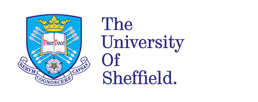
Robert I. Griffiths, Michelle L. Gleeson, Mark D. Danese, Anthony OHagan
Outcomes Insights Inc., USA. Johns Hopkins University School of Medicine, USA and University of Sheffield, UK.
Publication details: Value in Health 15, 656-663, 2012.
Objectives: To assess the accuracy and precision of inverse probability weighted (IPW) least squares regression analysis for censored cost data.
Methods: By using Surveillance, Epidemiology, and End Results- Medicare, we identified 1500 breast cancer patients who died and had complete cost information within the database. Patients were followed for up to 48 months (partitions) after diagnosis, and their actual total cost was calculated in each partition. We then simulated patterns of administrative and dropout censoring and also added censoring to patients receiving chemotherapy to simulate comparing a newer to older intervention. For each censoring simulation, we performed 1000 IPW regression analyses (bootstrap, sampling with replacement), calculated the average value of each coefficient in each partition, and summed the coefficients for each regression parameter to obtain the cumulative values from 1 to 48 months.
Results: The cumulative, 48- month, average cost was $67,796 (95% confidence interval [CI] $58,454 $78,291) with no censoring, $66,313 (95% CI $54,975$80,074) with administrative censoring, and $66,765 (95% CI $54,510$81,843) with administrative plus dropout censoring. In multivariate analysis, chemotherapy was associated with increased cost of $25,325 (95% CI $17,549$32,827) compared with $28,937 (95% CI $20,510$37,088) with administrative censoring and $29,593 ($20,564$39,399) with administrative plus dropout censoring. Adding censoring to the chemotherapy group resulted in less accurate IPW estimates. This was ameliorated, however, by applying IPW within treatment groups.
Conclusion: IPW is a consistent estimator of population mean costs if the weight is correctly specified. If the censoring distribution depends on some covariates, a model that accommodates this dependency must be correctly specified in IPW to obtain accurate estimates.
Keywords: cost analysis, inverse probability weighting, observational data, accuracy and precision.